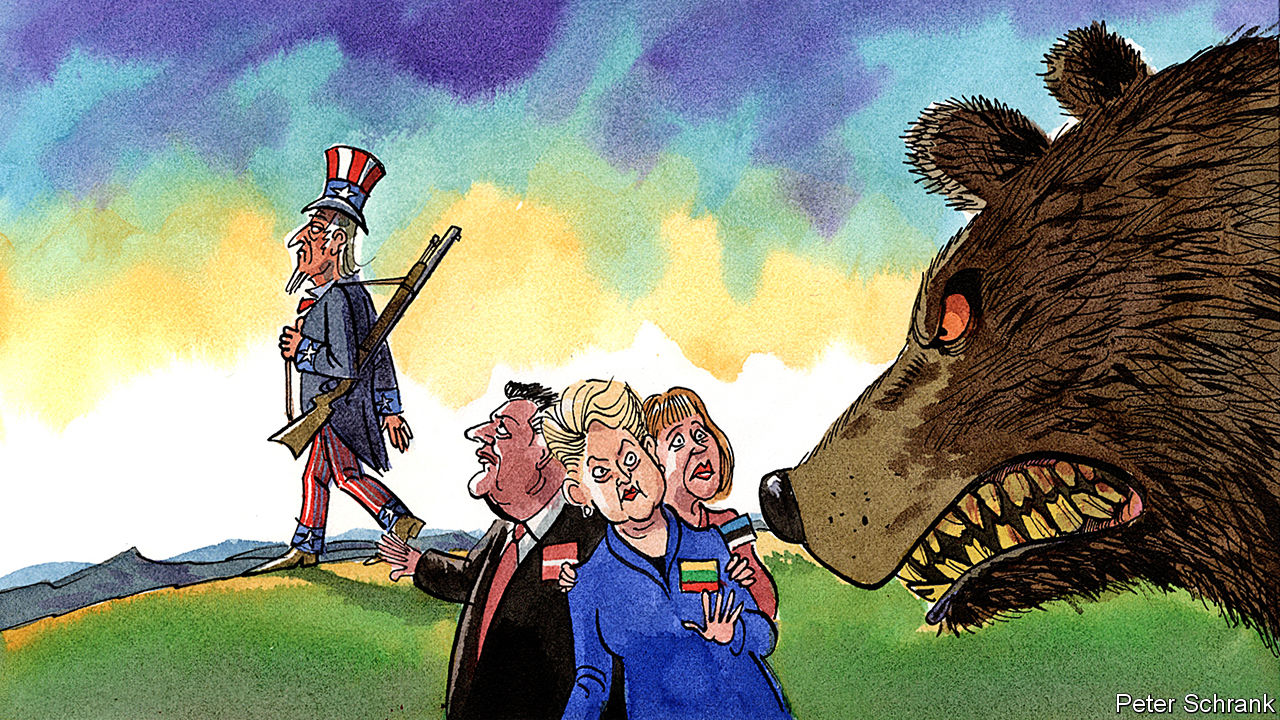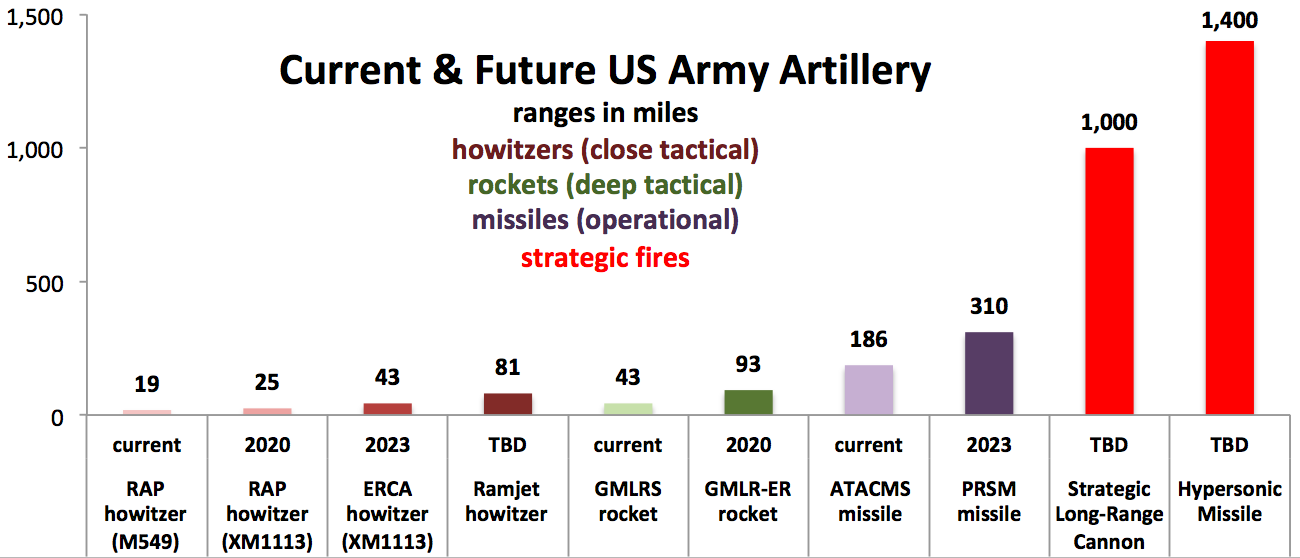New Delhi: Indians had a romanticized view of China in the years immediately after independence, influenced largely by Prime Minister Jawaharlal Nehru’s thinking and the writings of Chinese travellers Fa Hien and Hiuen Tsang, who visited India in the 4th and 7th centuries AD, respectively. Both Chinese visitors were deeply impressed by what they saw in India and by the warmth with which they were received. The spread of Buddhist influence to China, which now has a Buddhist population of around 240 million, followed these visits. There were also visits to India and its Indian Ocean neighbourhood, in the 15th century, by a Chinese fleet headed by Admiral Zheng He. The Admiral, a Mongolian eunuch, ever ready to use coercion, dealt cruelly with a Sri Lankan ruler whom he took as prisoner to China, along with the holy “tooth relic” of Lord Buddha.
16 October 2018
Not China, 1962 war called India’s bluff
LT GEN H S PANAG
 India must not forget the catastrophic defeat of 1962 war with China, when our Army was routed in just 10 days of actual battle in two phases of five days each in October and November. The whole of North East Frontier Agency (NEFA) and 50 per cent of Ladakh were shamefully abandoned. To add insult to the injury, after achieving its political and military aims, China unilaterally declared a ceasefire and withdrew.
India must not forget the catastrophic defeat of 1962 war with China, when our Army was routed in just 10 days of actual battle in two phases of five days each in October and November. The whole of North East Frontier Agency (NEFA) and 50 per cent of Ladakh were shamefully abandoned. To add insult to the injury, after achieving its political and military aims, China unilaterally declared a ceasefire and withdrew.
So complete was our defeat that for the next 24 years, we did not dare to deploy our Army on the Line of Actual Control (LAC). Not until the mercurial General K. Sundarji forced the issue after the Sumdorong Chu incident in 1986.
Pakistan Seeks I.M.F. Bailout as Government Sends Mixed Messages
By Maria Abi-Habib
 NEW DELHI — After Pakistan’s government signaled that it would seek a bailout from the International Monetary Fund, Prime Minister Imran Khan this week did the exact opposite of the austerity measures the global body is demanding: He inaugurated a public-housing project to deliver five million homes. That tension — between Mr. Khan’s campaign promises to build the social welfare state and the prescriptions to help set Pakistan’s devastated economy right — is leaving investors at home and internationally guessing about the policies he truly intends to pursue. But investors typically detest such uncertainty and responded this week by offloading the Pakistani rupee, which hit a historic low, while hammering the stock market with a sell-off, wiping $2 billion off the index’s value.
NEW DELHI — After Pakistan’s government signaled that it would seek a bailout from the International Monetary Fund, Prime Minister Imran Khan this week did the exact opposite of the austerity measures the global body is demanding: He inaugurated a public-housing project to deliver five million homes. That tension — between Mr. Khan’s campaign promises to build the social welfare state and the prescriptions to help set Pakistan’s devastated economy right — is leaving investors at home and internationally guessing about the policies he truly intends to pursue. But investors typically detest such uncertainty and responded this week by offloading the Pakistani rupee, which hit a historic low, while hammering the stock market with a sell-off, wiping $2 billion off the index’s value.Pakistan's Failing Economy Arises from Oversized Pak Army's Budget
Pakistan in 2018 has ended up as a ‘Economically Failed State’ chiefly due to massive appropriations by Pakistan Army GHQ in Rawalpindi with no questions dare asked nor accountability called for by Pakistan’s elected/nominated Prime Ministers sitting in Islamabad. Pakistan’s gullible populace is sedated by Pakistan Army hierarchy that this is required to face Pakistan’s threats emanating from both flanks.Afghanistan and India over the decades have not posed any military threat to Pakistan or threatened it as such. It is the Pakistan Army flush with ‘black money’ diverted from Pakistan’s national exchequer has financed and trained Islamic Jihadi terrorist monsters inflicting terror and suicide bombings in Afghanistan and India.
The Pakistan Army also in the absence of any credible military threats from India or Afghanistan maintains an oversized military machine and an expanding nuclear weapons arsenal. This has drained a limited economy of Pakistan of vast funds which could have been usefully used for stimulating Pakistan indigenous economic activity and for economic and social upliftment of the Pakistani population.
It is commonly said that the Pakistan Army and not the Prime Minister that controls Pakistan’s foreign policy but it would be equally true to assert that the Pakistan Amy has a stranglehold on Pakistan’s economy and has distorted Pakistan’s economic priorities and its international economic directions by selective selection of Pakistan’s economic partners who toe Pakistan Army’s agenda.
Paddling Upstream: Transboundary Water Politics in South Asia
AMBIKA VISHWANATH
Analysis about South Asian geopolitics tends to gravitate toward the often-competitive ties between China and India. This tendency can be seen on many newsworthy issues, such as rival attempts to establish blue-water navies; competitive efforts to shape how the region’s roads, bridges, and ports are funded and built; and the omnipresent Pakistan issue. Such topics are undoubtedly important. But other practical, everyday policy concerns like water sharing and usage often receive less attention, are combined with larger security or border concerns, or are dealt with only when natural disasters occur. Yet water politics has far-reaching consequences for the prosperity and security of China, India, and other neighboring countries alike. And while this transboundary issue is integral to the national development policies of these countries, it is not analyzed enough or well enough understood.
Power Play: Addressing China`s Belt and Road Strategy
This report contextualizes China's “One Belt, One Road” in China’s grand strategy. The authors argue that the “Belt and Road” will cement China’s global power status and at the same time threaten the world economy and global democratization efforts. In response, they suggest that the US and its allies should adopt a coherent and common strategy that seeks to shape the “Belt and Road”, compete when necessary, and most critically, promote a positive economic vision.
If the U.S. Doesn’t Control Corporate Power, China Will
BY MATT STOLLER
 Last week, Bloomberg broke the news of a hack by the Chinese military of critical hardware assembled by an American company in China, affecting Apple, Amazon, and the U.S. Defense Department. While there is controversy over the story, no one doubts two key facts. Chinese hacking of Western corporations and governments is systemic, and China has a virtual monopoly over the manufacture of high-technology products, which it uses to its own advantage. The same day as Bloomberg published the expose, U.S. Vice President Mike Pence gave a speech discussing China. Espionage, he said, was just one of a range of tricks China uses. Others include tariffs, forced technology transfers, arm-twisting of corporate leaders to lobby the U.S. government, and censorship of Hollywood through enticing Western media companies with promises of reaching Chinese audiences.
Last week, Bloomberg broke the news of a hack by the Chinese military of critical hardware assembled by an American company in China, affecting Apple, Amazon, and the U.S. Defense Department. While there is controversy over the story, no one doubts two key facts. Chinese hacking of Western corporations and governments is systemic, and China has a virtual monopoly over the manufacture of high-technology products, which it uses to its own advantage. The same day as Bloomberg published the expose, U.S. Vice President Mike Pence gave a speech discussing China. Espionage, he said, was just one of a range of tricks China uses. Others include tariffs, forced technology transfers, arm-twisting of corporate leaders to lobby the U.S. government, and censorship of Hollywood through enticing Western media companies with promises of reaching Chinese audiences.U.S. - China Trade Tariffs Are Reaching Their Limit
by Martin Armstrong
 The U.S. announced the latest round of trade tariffs to be imposed on imports from China on Monday, with the affected goods valued at around $200 billion per year. The tariffs will come into force on September 24 while a Chinese retaliation of $60 billion worth of tariffs has also been threatened. Should this threat be carried out, the U.S. is said to be preparing tariffs on an extra $267 billion worth of imports. As our chart shows, using U.S. Census Bureau data analyzed by the BBC, the Trump administration has now imposed penalties on about half of all imports from China and would actually exceed the 2017 total import figure if the proposed $267 billion of new tariffs prove to be needed. The road is also starting to run out for China. If all proposed tariffs are put into place, that would leave Xi Jingping with only around $20 billion worth of U.S. imports to penalise when comparing to last year's total trade figure.
The U.S. announced the latest round of trade tariffs to be imposed on imports from China on Monday, with the affected goods valued at around $200 billion per year. The tariffs will come into force on September 24 while a Chinese retaliation of $60 billion worth of tariffs has also been threatened. Should this threat be carried out, the U.S. is said to be preparing tariffs on an extra $267 billion worth of imports. As our chart shows, using U.S. Census Bureau data analyzed by the BBC, the Trump administration has now imposed penalties on about half of all imports from China and would actually exceed the 2017 total import figure if the proposed $267 billion of new tariffs prove to be needed. The road is also starting to run out for China. If all proposed tariffs are put into place, that would leave Xi Jingping with only around $20 billion worth of U.S. imports to penalise when comparing to last year's total trade figure.How President Trump is helping Beijing win in the South China Sea
By Robert D. Kaplan
 For years now, China has been at war against the United States in the South China Sea — only Washington didn’t notice until the process was well underway. The Chinese way of war, modeled after the philosopher of middle antiquity, Sun Tzu, is to win without ever having to fight. Thus, the Chinese have been proceeding by microsteps: reclaim an island here, build a runway there, install a missile battery in a third place, deploy an oil exploration rig temporarily in disputed waters, establish a governorate, and so on. Each step is designed to create a small fact, but without eliciting a military response from the other side, since the Chinese know they may be a generation away from matching the U.S. Navy and Air Force in fighting capability.
For years now, China has been at war against the United States in the South China Sea — only Washington didn’t notice until the process was well underway. The Chinese way of war, modeled after the philosopher of middle antiquity, Sun Tzu, is to win without ever having to fight. Thus, the Chinese have been proceeding by microsteps: reclaim an island here, build a runway there, install a missile battery in a third place, deploy an oil exploration rig temporarily in disputed waters, establish a governorate, and so on. Each step is designed to create a small fact, but without eliciting a military response from the other side, since the Chinese know they may be a generation away from matching the U.S. Navy and Air Force in fighting capability.Chinese authorities launch 'anti-halal' crackdown in Xinjiang
Lily Kuo
Authorities in Xinjiang have launched a campaign against the “spread of halal”, claiming the growing number of halal products is encouraging religious extremism in the heavily monitored Chinese region. Party officials in Urumqi, the capital of Xinjiang, which is home to about 12 million people from Muslim minorities, on Monday called on government officers to strengthen the “ideological struggle” and fight “halalification” or the “pan-halal tendency,” a post on the Urumqi People’s ProcuratorateWechat account said. The term refers to extending halal labelling – food that adheres to Islamic law – to non-food items to appeal to Muslim consumers. Officials and state media say the growing number of products labelled halal allows Islamic rituals to penetrate secular life in China.
How a Saudi Journalist's Disappearance Could Have a Global Impact
 The mere suggestion that Jamal Khashoggi was murdered will have a chilling effect on all Saudi citizens who criticize Riyadh's policies. Saudi Arabia might calculate that any move against dissidents is unlikely to produce too many international consequences, but it could jeopardize much-needed foreign investment. If Riyadh and Ankara's stories continue to clash, however, relations could sour with Turkey, a key regional influence in the Sunni world. Jamal Khashoggi only needed to take care of some routine paperwork. On Oct. 3, the respected Saudi journalist and government critic arrived at his country's consulate in Istanbul to finalize divorce proceedings as his fiancee waited outside. Khashoggi, however, failed to reappear. And three days later, Turkish authorities announced that they had reason to believe a 15-person Saudi security team had tortured, murdered and dismembered the Washington Post journalist. The bombshell has given the unsettling disappearance a drastic, new level of seriousness that is sure to have repercussions across the region.
The mere suggestion that Jamal Khashoggi was murdered will have a chilling effect on all Saudi citizens who criticize Riyadh's policies. Saudi Arabia might calculate that any move against dissidents is unlikely to produce too many international consequences, but it could jeopardize much-needed foreign investment. If Riyadh and Ankara's stories continue to clash, however, relations could sour with Turkey, a key regional influence in the Sunni world. Jamal Khashoggi only needed to take care of some routine paperwork. On Oct. 3, the respected Saudi journalist and government critic arrived at his country's consulate in Istanbul to finalize divorce proceedings as his fiancee waited outside. Khashoggi, however, failed to reappear. And three days later, Turkish authorities announced that they had reason to believe a 15-person Saudi security team had tortured, murdered and dismembered the Washington Post journalist. The bombshell has given the unsettling disappearance a drastic, new level of seriousness that is sure to have repercussions across the region.Stop Military Aid to Saudi Arabia
BY RAND PAUL
 By now you’ve seen the headlines: An American resident, a Saudi Arabian journalist who wrote for The Washington Post, has gone missing abroad and is presumed dead. Jamal Khashoggi was last seen walking into the Saudi consulate in Istanbul, and Turkish security officials believe he was killed “on the orders of the Saudi royal court,” according to The New York Times. He was a vocal critic of the lack of free speech in Saudi Arabia, which makes his sudden disappearance all the more suspicious given the Saudis’ aversion to public dissent.
By now you’ve seen the headlines: An American resident, a Saudi Arabian journalist who wrote for The Washington Post, has gone missing abroad and is presumed dead. Jamal Khashoggi was last seen walking into the Saudi consulate in Istanbul, and Turkish security officials believe he was killed “on the orders of the Saudi royal court,” according to The New York Times. He was a vocal critic of the lack of free speech in Saudi Arabia, which makes his sudden disappearance all the more suspicious given the Saudis’ aversion to public dissent.Lessons From An Islamist Neighbourhood Of London In The 1990s: Why ‘Urban Naxals’ Are The Wrong Kind Of ‘Safety Valves
by Pritam Banerjee
 Anyone who lived in north London in the late 1990s, and wasn’t biased to Islamism, would tell you that the propaganda that went unchecked there should have been nipped in the bud. Justice Chandrachud’s reference to dissent as a form of safety valve in democracies is undoubtedly well meant and pertinent. But as any engineer would tell you, safety valves need to be well designed. Otherwise they can lead to all kinds of lethal accidents. To allow dissent without discernment is dangerous to the very fabric of civilian engagement and compromise that modern democracies embody. I am speaking from personal lived experience from late 1990s United Kingdom. Living as a student in London in 1999-2000, I found cheap lodgings with a Bangladeshi immigrant family in Bounds Green area of north London. This stretch of the city from around Finsbury Park northwards had a large immigrant population, South Asian, Turkish, and West African, which was predominantly Muslim. These were pre 9/11 days, and mosques, ‘social clubs’, and shops brazenly displayed poster exhorting the faithful to jihad, and the destruction of the infidel in Kashmir and Chechnya.
Anyone who lived in north London in the late 1990s, and wasn’t biased to Islamism, would tell you that the propaganda that went unchecked there should have been nipped in the bud. Justice Chandrachud’s reference to dissent as a form of safety valve in democracies is undoubtedly well meant and pertinent. But as any engineer would tell you, safety valves need to be well designed. Otherwise they can lead to all kinds of lethal accidents. To allow dissent without discernment is dangerous to the very fabric of civilian engagement and compromise that modern democracies embody. I am speaking from personal lived experience from late 1990s United Kingdom. Living as a student in London in 1999-2000, I found cheap lodgings with a Bangladeshi immigrant family in Bounds Green area of north London. This stretch of the city from around Finsbury Park northwards had a large immigrant population, South Asian, Turkish, and West African, which was predominantly Muslim. These were pre 9/11 days, and mosques, ‘social clubs’, and shops brazenly displayed poster exhorting the faithful to jihad, and the destruction of the infidel in Kashmir and Chechnya.How a Saudi Journalist's Disappearance Could Have a Global Impact
 The mere suggestion that Jamal Khashoggi was murdered will have a chilling effect on all Saudi citizens who criticize Riyadh's policies. Saudi Arabia might calculate that any move against dissidents is unlikely to produce too many international consequences, but it could jeopardize much-needed foreign investment. If Riyadh and Ankara's stories continue to clash, however, relations could sour with Turkey, a key regional influence in the Sunni world.
The mere suggestion that Jamal Khashoggi was murdered will have a chilling effect on all Saudi citizens who criticize Riyadh's policies. Saudi Arabia might calculate that any move against dissidents is unlikely to produce too many international consequences, but it could jeopardize much-needed foreign investment. If Riyadh and Ankara's stories continue to clash, however, relations could sour with Turkey, a key regional influence in the Sunni world.In the future of work it's jobs, not people, that will become redundant
Leena Nair
 I am likely stating the obvious but it needs to be stated as often as possible – the world is changing and it is changing fast. The Fourth Industrial Revolution is blurring the lines between the real and the technological world and challenging what it means to be human. Yet people are clearly at the heart of all organizational transformations generated by this phenomenon. We see this, both in the transformation we are driving within Unilever but also when we look outside, across and beyond our industry. All of this is affects how people will experience work, whether it’s new operating models that challenge hierarchy, new career models that allow for different experiences, a borderless workplace that allows for flexible resourcing, hyper-personalization in the workplace or the need to close a growing skills gap through a culture of lifelong learning.
I am likely stating the obvious but it needs to be stated as often as possible – the world is changing and it is changing fast. The Fourth Industrial Revolution is blurring the lines between the real and the technological world and challenging what it means to be human. Yet people are clearly at the heart of all organizational transformations generated by this phenomenon. We see this, both in the transformation we are driving within Unilever but also when we look outside, across and beyond our industry. All of this is affects how people will experience work, whether it’s new operating models that challenge hierarchy, new career models that allow for different experiences, a borderless workplace that allows for flexible resourcing, hyper-personalization in the workplace or the need to close a growing skills gap through a culture of lifelong learning.What worries me about the U.S. economy
 The U.S. economy certainly appears as if it is in an ideal place: unemployment is at its lowest in nearly half a century, and the number of people voluntarily leaving jobs to find new ones, an indicator of their confidence in the economy, is at a 20-year high. Economic growth this year is likely to be around 3 percent, more than what most economists think the economy is capable of in the medium term. Inflation is moderate. But as the current stock market nosedive reminds us, there are risks that could jolt the economy out of its strong position. They have to do with three related factors: timing, debt and slowing growth in the rest of the world.
The U.S. economy certainly appears as if it is in an ideal place: unemployment is at its lowest in nearly half a century, and the number of people voluntarily leaving jobs to find new ones, an indicator of their confidence in the economy, is at a 20-year high. Economic growth this year is likely to be around 3 percent, more than what most economists think the economy is capable of in the medium term. Inflation is moderate. But as the current stock market nosedive reminds us, there are risks that could jolt the economy out of its strong position. They have to do with three related factors: timing, debt and slowing growth in the rest of the world.Berlin’s untenable foreign-policy strategic vacuum
Josef Janning
 Berlin can no longer afford to float ideas that have no practical consequences, and keep muddling through There is a striking contrast between the magnitude of change in Germany’s foreign policy environment and the triviality of the country’s strategic debate. This change has three dimensions that fundamentally challenge the current position and practice of German foreign policy. Firstly, the European Union, though a principal framework of German policy, is more politically fragmented than ever, and lacks a stable centre. The bloc appears ever less able to act as the lever of German strength that Frank-Walter Steinmeier, during his tenure as foreign minister, believed it could be. The permissive consensus on Europe is long gone, and “sovereigntism” is shaping the discourse on the EU in many countries, including Germany.
Berlin can no longer afford to float ideas that have no practical consequences, and keep muddling through There is a striking contrast between the magnitude of change in Germany’s foreign policy environment and the triviality of the country’s strategic debate. This change has three dimensions that fundamentally challenge the current position and practice of German foreign policy. Firstly, the European Union, though a principal framework of German policy, is more politically fragmented than ever, and lacks a stable centre. The bloc appears ever less able to act as the lever of German strength that Frank-Walter Steinmeier, during his tenure as foreign minister, believed it could be. The permissive consensus on Europe is long gone, and “sovereigntism” is shaping the discourse on the EU in many countries, including Germany.Ironically, the GRU Gets Bitten by the Internet
By Scott Stewart
 Seven Russian intelligence officers have been indicted in the U.S. in connection with hacking operations against a variety of targets in several countries. These officers have also received a great deal of embarrassing attention from activists on the internet and social media. This case illustrates how technologies such as social media, often used as a weapon by intelligence agencies, can also be turned against them.
Seven Russian intelligence officers have been indicted in the U.S. in connection with hacking operations against a variety of targets in several countries. These officers have also received a great deal of embarrassing attention from activists on the internet and social media. This case illustrates how technologies such as social media, often used as a weapon by intelligence agencies, can also be turned against them.The AI Column: Time For A Moral Reckoning Down In Silicon Valley
 The recent revelation that China’s security services had successfully compromised the servers of thousands of leading tech’ firms cloud computing platforms has sent shockwaves through the tech world. The hardware hack may have compromised some of the most sensitive computer systems used by the military and intelligence services. While the scope and sophistication of the operations were alarming, it was no surprise to some in national security circles.
The recent revelation that China’s security services had successfully compromised the servers of thousands of leading tech’ firms cloud computing platforms has sent shockwaves through the tech world. The hardware hack may have compromised some of the most sensitive computer systems used by the military and intelligence services. While the scope and sophistication of the operations were alarming, it was no surprise to some in national security circles.
This reckoning was a long time coming.
Defensive Protection Systems Leading Army Modernization
 The modern battlefield has become a complex theater of threats, from powerful anti-armor and anti-aircraft missiles to the dawn of small but lethal unmanned aircraft. The Army and Marine Corps know these threats are not just in the hands of organized armies, but have proliferated and will be a part of any potential future conflict the U.S. military faces. To counter these threats, a major modernization effort to incorporate defensive protection systems for troops, aircraft and ground vehicles is underway. The need for troops to have access to most state-of-the-art EO/IR technologies mounted on vehicles, helmets or handheld is essential to keep the edge over increasingly advanced adversaries around the world. Technologies like the Leonardo DRS handheld Joint Effects Targeting System is a smaller next-generation EO/IR technology giving forward observers the ability to protect their fellow soldiers with extremely accurate calls for fire.
The modern battlefield has become a complex theater of threats, from powerful anti-armor and anti-aircraft missiles to the dawn of small but lethal unmanned aircraft. The Army and Marine Corps know these threats are not just in the hands of organized armies, but have proliferated and will be a part of any potential future conflict the U.S. military faces. To counter these threats, a major modernization effort to incorporate defensive protection systems for troops, aircraft and ground vehicles is underway. The need for troops to have access to most state-of-the-art EO/IR technologies mounted on vehicles, helmets or handheld is essential to keep the edge over increasingly advanced adversaries around the world. Technologies like the Leonardo DRS handheld Joint Effects Targeting System is a smaller next-generation EO/IR technology giving forward observers the ability to protect their fellow soldiers with extremely accurate calls for fire.The AI Column: Time For A Moral Reckoning Down In Silicon Valley
 The recent revelation that China’s security services had successfully compromised the servers of thousands of leading tech’ firms cloud computing platforms has sent shockwaves through the tech world. The hardware hack may have compromised some of the most sensitive computer systems used by the military and intelligence services. While the scope and sophistication of the operations were alarming, it was no surprise to some in national security circles.
The recent revelation that China’s security services had successfully compromised the servers of thousands of leading tech’ firms cloud computing platforms has sent shockwaves through the tech world. The hardware hack may have compromised some of the most sensitive computer systems used by the military and intelligence services. While the scope and sophistication of the operations were alarming, it was no surprise to some in national security circles.
This reckoning was a long time coming.
The Military’s Cyber Defenses Are in Appallingly Bad Shape
By FRED KAPLAN
I have just read one of the most appalling national security reports that I’ve seen in quite a while, an account of such neglect and malfeasance inside the Pentagon and the defense industries that, if we were to get into a major war, the trillions of dollars that we’ve spent on advanced weapons over the years might be all for naught. Our ability to win such a war may be in doubt. The report, by the Government Accountability Office, is called Weapon Systems Cybersecurity: DOD Just Beginning to Grapple With Scale of Vulnerabilities. It’s the subtitle that should make jaws drop. They should have begun to grapple with them decades ago. In 1967, at the dawn of the internet, a handful of computer scientists warned that networks, which allow access to information from many unsecured locations, would produce inherent vulnerabilities.
Defense Buildup: Where Are the Forces?
Mark F. Cancian
The Trump administration increased spending for defense by $95 billion between FY 2016 and FY 2019, but even with such a large increase, there was no escaping the trade-offamong readiness, modernization, and force structure. Readiness came first so that forces could meet a minimum standard. The next priority was to increase modernization by expanding production of existing systems, upgrading these systems, and enhancing research and development for future systems. Expanding force structure came last in priority, so the increases were smaller than had been expected. This aligns with the new national defense strategy but collides with day-to-day deployment demands for ongoing conflicts, crisis response, and engagement with allies and partners. To meet these demands, the services are retaining more legacy systems and moving towards a de facto high-low mix.
The Baltics fear European “strategic autonomy”
 PERHAPS nowhere in Europe was John McCain mourned more deeply than in Estonia, Latvia and Lithuania. He had been one of a small group of American senators who in the 1990s called for NATO to encompass the Baltic states after four decades of Soviet rule. “He was always ready to listen to us and relate our problems and challenges to the US administration, Republican or Democrat,” says Juri Luik, Estonia’s defence minister. “He understood the role of NATO enlargement as part of the reunification of Europe; not everyone in Washington shared that.” Mr Luik has called for NATO’s new headquarters in Brussels to bear his name. Intentionally or not, such tributes also read like rebukes to President Donald Trump, whose commitment to transatlantic security remains as hazy as McCain’s was crystal-clear.
PERHAPS nowhere in Europe was John McCain mourned more deeply than in Estonia, Latvia and Lithuania. He had been one of a small group of American senators who in the 1990s called for NATO to encompass the Baltic states after four decades of Soviet rule. “He was always ready to listen to us and relate our problems and challenges to the US administration, Republican or Democrat,” says Juri Luik, Estonia’s defence minister. “He understood the role of NATO enlargement as part of the reunification of Europe; not everyone in Washington shared that.” Mr Luik has called for NATO’s new headquarters in Brussels to bear his name. Intentionally or not, such tributes also read like rebukes to President Donald Trump, whose commitment to transatlantic security remains as hazy as McCain’s was crystal-clear.Army Building 1,000-Mile Supergun
By SYDNEY J. FREEDBERG JR.
RAP: Rocket Assisted Projectile (current M549A1 or future XM1113). ERCA: Extended Range Cannon Artillery. GMLRS-ER: Guided Multiple-Launch Rocket System – Extended-Range. ATACMS: Army Tactical Missile System. PRSM: Precision Strike Missile.
SOURCE: US Army. SLRC and Hypersonic Missile ranges as reported in Army Times.

Subscribe to:
Comments (Atom)


